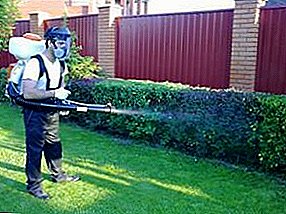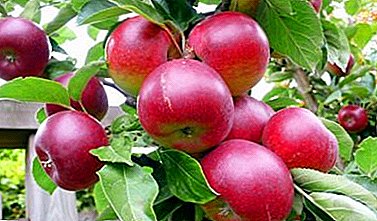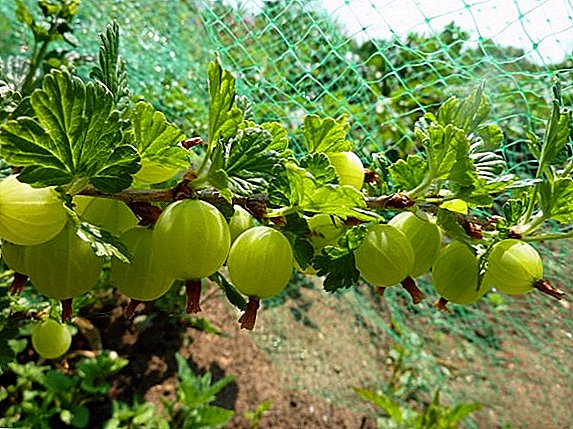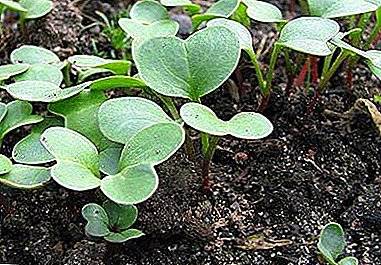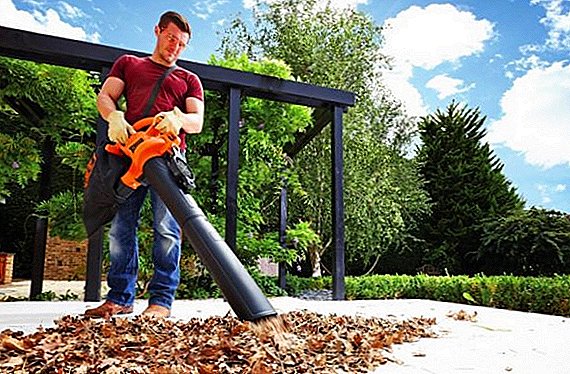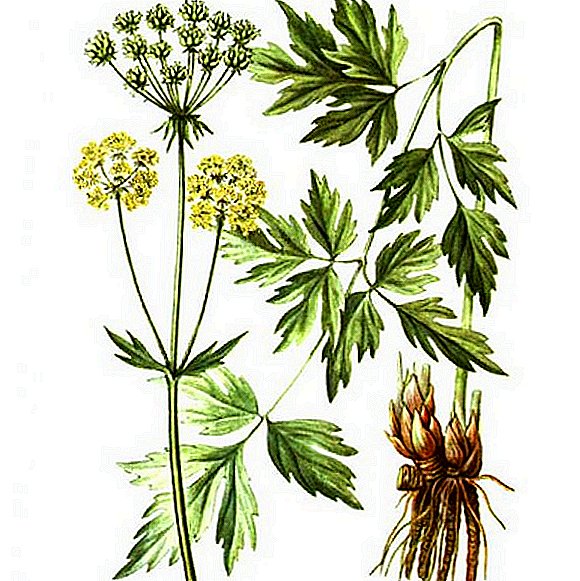 The fragrant lovage is popularly called winter celery, the smell of both plants is very similar. The plant is actively used in folk and traditional medicine against many ailments. In this article we will learn in detail about the lovable, as well as the medicinal properties of the leaves and root of the plant.
The fragrant lovage is popularly called winter celery, the smell of both plants is very similar. The plant is actively used in folk and traditional medicine against many ailments. In this article we will learn in detail about the lovable, as well as the medicinal properties of the leaves and root of the plant.
Lovage: chemical composition and nutritional value
Lovage is a perennial flowering and fruiting plant that has managed to spread almost throughout the world. Due to its rich composition it is used in cooking, cosmetology and medicine. The roots and leaves of the plant contain:
- organic acids (angelic, valeric, acetic and malic);
- tannins;
- resins and essential oils;
- gum and furocoumarins;
- sugar and starch;
- lecithin;
- trace elements and ascorbic acid.
 Calorie lovage - 20 calories. The ratio of proteins, fats and carbohydrates:
Calorie lovage - 20 calories. The ratio of proteins, fats and carbohydrates:- proteins - 3.7 g;
- carbohydrates - 7.6 g;
- fat - 0.4 g
What is useful lovage
The therapeutic properties of the lovage have a wide range of applications: they help to treat diseases of the cardiovascular, digestive, nervous, respiratory, and urogenital systems. This plant has a number of useful actions:
- wound healing;
- antiseptic;
- expectorant;
- healing;
- pain killer;
- choleretic;
- diuretic;
- soothing.
With problems with the digestive tract, decoctions relieve stomach pain and intestinal colic, improve metabolism. This property is used by nutritionists, including the grass in the diet of their wards, struggling with obesity - after metabolic processes improve, it is easier to lose those extra pounds.
The GI tract is well influenced by: silverweed, gentian, dodder, yucca, swimsuit, milk thistle, calendula, kalanchoe, purple stonecrop, turnip, Kale cabbage, sage.With neuroses, tantrums and anxiety, lovage acts soothingly, normalizes sleep. The herb helps blood formation, which contributes to the strengthening and elasticity of blood vessels, with prolonged use eliminates anemia.
Compresses and lotions perfectly heal various types of wounds, ulcers and scratches. The content of carotene in parts of the plant is not less than in carrots, so it is useful to eat it to restore the function of vision.
Did you know? Lyubistok - not only medicinal root, in ancient times it was considered a magical plant. Brides sewed pieces of love-grass in wedding dresses, so that husbands all their lives only looked at them. And together with sprigs of wormwood, the grass was considered a powerful talisman against mermaids.

How to use lovage in traditional medicine
The roots of the plant are widely used in pharmacology as a raw material for medicines from the following health problems:
- anemia;
- swelling;
- dropsy;
- pyelonephritis;
- impaired urination;
- gout;
- inflammation of the kidneys and bladder;
- migraine;
- catarrh of the respiratory organs;
- rheumatism.
Important! Lovage besides benefits can bring and harm: taking it as a medicine, you should be careful in dosage to people with problems of the ureters and kidneys.
In gynecology, herbal preparations are used for inflammation of the female genital organs, to normalize the menstrual cycle, to relieve pain during critical days.  Also known is the benefit of lovage in the treatment of the reproductive system - both female and male (active ingredients in the composition stimulate blood circulation in the pelvic organs).
Also known is the benefit of lovage in the treatment of the reproductive system - both female and male (active ingredients in the composition stimulate blood circulation in the pelvic organs).
Lovage homeopathic remedies are used in the treatment of cardiovascular diseases, diseases of the throat and respiratory tract, neurosis and hysteria. Doctors recognize that winter celery with regular consumption of food significantly improves immunity.
The use of lovage in traditional medicine (recipes)
In folk medicine, lovage has long been recognized as an effective medicine with a wide range of applications. Decoction of the root helps in the treatment of urogenital problems, with kidney disease, as a diuretic, and with menstrual pain.
Prepare it as follows: pre-soaked for a day roots (40 g) boil in a liter of water for about seven minutes. Broth should be divided into five parts and drink during the day.
Important! It is believed that the root should not be boiled, because while the volatile components of the essential oil evaporate.
 Lovage tincture - One of the main forms of application in traditional medicine. To prepare take a teaspoon of milled root, pour a glass of boiling water, insist for half an hour. Infusion is taken to enhance potency three times a day for a tablespoon.
Lovage tincture - One of the main forms of application in traditional medicine. To prepare take a teaspoon of milled root, pour a glass of boiling water, insist for half an hour. Infusion is taken to enhance potency three times a day for a tablespoon.Outwardly, this infusion helps to cure purulent inflammations on the skin, it must be prepared in large quantities and diluted - used for baths with psoriasis, eczema, neurodermatitis.
Lovage brings significant benefits in getting rid of age spots, the recipe is as follows: a teaspoon of ground roots and leaves is poured 250 ml of boiling water. Insist for an hour, then boil for twenty minutes in a water bath. Wash the face with decanted broth twice a day.
Hair Mask: 20 grams of chopped dried root pour 250 ml of boiling water, let it stand in a thermos for 6-8 hours.
For hair care use: cumin, bergamot, zizifus, beeswax, lagenariyu, laurel, hops.
Then strain the mixture, rub into the scalp, moisten the hair along the entire length, wrap the head with a towel and leave for an hour. Wash off with flowing warm water without shampoo.
Infusion for gargling: a tablespoon of minced root pour boiling water 150 ml, insist hour. Before rinsing a little warm, carry out the procedure three or four times a day. 
How apply lovage in cosmetology
Lovage-grass is used not only in medicine - it is more than useful in cosmetology. The decoction of the plant is used to restore weakened and split hair: the grass gives the hair a healthy shine, silkiness and fluffiness.
Essential oil women use as an aphrodisiac. In perfumery, it is often used as a fragrance, and in SPA salons - as an ingredient for aromatherapy and in massage procedures. In the cosmetic industry, winter celery is a part of deodorants and antiperspirants.
Broth from the crushed root lovage helps get rid of age spots, and applied on the scalp - to stimulate hair growth.
Nettle, nasturtium, walnut, linden, periwinkle, bird cherry, peony, momordica, red mountain ash, amaranth are often used in cosmetology.
The antimicrobial action of the grass makes it useful in foot baths for skin problems, as the plant actively fights fungi.
The lovage extract is also added to the means for cleansing the skin of the face and neck, in antiseptic creams for the face, hands and feet. Herbal remedies do an excellent job with acne and pustules.
The ability to provide good blood circulation helps to relax and rest after a fifteen-minute bath. 
Lovage and cooking
Due to its spicy aroma, the grass is not the last ingredient in cooking, and the greenery, the roots, and the seeds of lovage are worthy of use.
The roots are used as a spice in the form of powder or crushed. Grated, it goes well with other vegetables in salads, sauces to main dishes, in addition, it is made from fragrant oil. From the young fresh rhizome prepare candied fruits and jam.
Stems and leaves go to salads, first and second courses, sauces and seasonings for meat, poultry and fish. Winter celery is popular in various butter and cheese mixes and snacks.
Leaves are often used as a spice in savory desserts, added to marinades. The top of the plant and the seeds give an interesting flavor to the pickles. Lovage has long been included by nutritionists in the menu of diets - medical and for weight loss.
Did you know? The soldiers of the Roman legions took the seeds of plants to battle in distant lands: thus, for example, fennel, parsley and lovage fell to England.
How to prepare the roots and leaves of lovage
The plant blooms in June, sometimes in July - depending on weather conditions, seed ripening occurs in September. In the first year after planting, only the leaves are harvested, using them fresh all season and harvesting for winter as seasoning.
For harvesting in the winter it is desirable to collect the leaves during flowering. It is necessary to dry the raw materials under a canopy on a clean sheet of paper or thick fabric, while in the dryer the temperature should not be above 35 ° C. Store dried leaves in a glass pot with a lid.  The roots are eaten the next year after planting, and, as a medicinal raw material, are dug out in three to four years. It is believed that during this time the rhizome is gaining the maximum concentration of useful elements.
The roots are eaten the next year after planting, and, as a medicinal raw material, are dug out in three to four years. It is believed that during this time the rhizome is gaining the maximum concentration of useful elements.
In early spring or late autumn, cutting off the green part, dig up the rhizome. Cleared from the ground, washed. The large ones are cut into smaller pieces and, stringing on a dense thread, are dried in a suspended state (it is possible in a dryer at 35 ° C, cutting into smaller pieces).
Dried roots are ground in a meat grinder or in a coffee grinder to a powder form. Store raw materials in glass containers with a resealable lid.
In late autumn, seeds ripen, they are harvested, dried under a canopy. Dried seeds are sorted out of debris, threshed and stored in the same way as the roots and leaves.

Contraindications to the use of lovage
Lovage root, despite its healing properties, has contraindications. It is forbidden to be treated by it to pregnant women: causing the blood flow to the pelvic organs, the grass can cause miscarriage.
Contraindicated to use drugs on the basis of love-herbs for glomerulonephritis and pyelonephritis, gastric ulcer and duodenal ulcer, hemorrhoids.
Today, many people think about healthy eating, and many previously forgotten vegetables return to the dining table. Perhaps the peculiar smell and taste of winter celery is not to everyone's liking, but this herb is certainly useful and healing.


